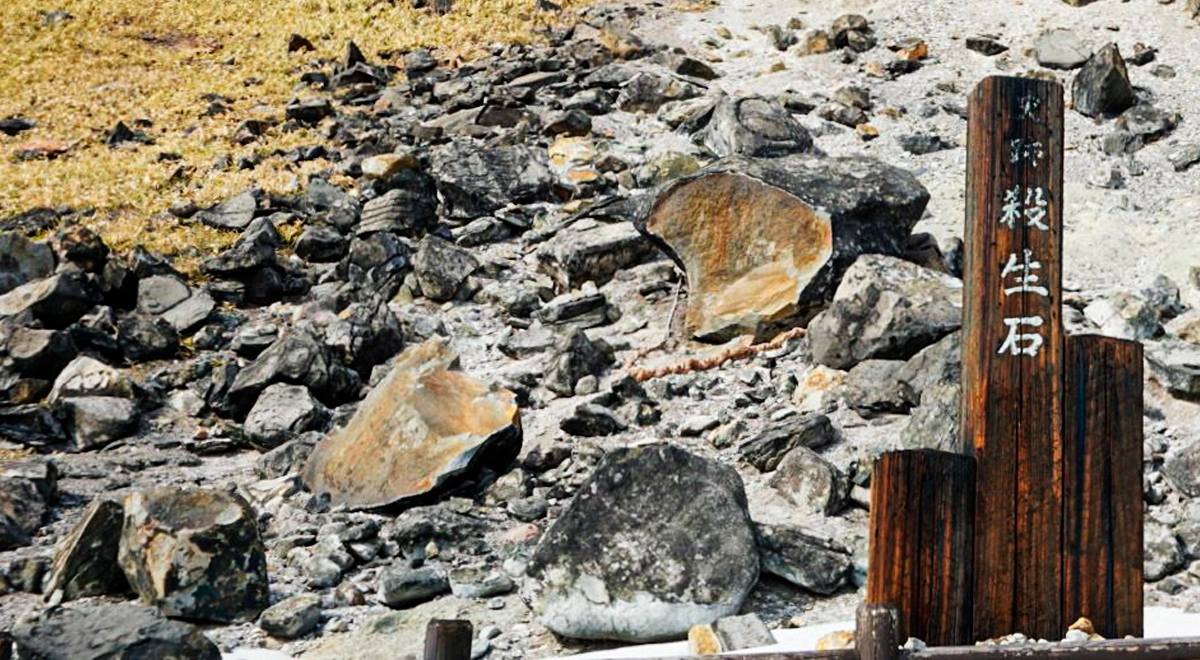03-07-2022. Sessho-Seki: Japan's "killer stone" breaks in two
Japan's Sessho-Seki Cursed Stone (殺生石, literally, Killer Stone) has received a lot of attention in recent days, despite its ancient legend. A Kyubi, nine-tailed fox, under the guise of a beautiful woman named Tamamo-no-Mae, made a place for herself at court. Everyone praised her multiple knowledge, her natural grace, and one of her characteristics was that she gave off a sweet and pleasant aroma. When she managed to gain the attention of the emperor (according to some Tenno (76th emperor), and according to others Toba (74th emperor), between the 11th and 12th centuries, it was discovered that she had been sent to assassinate him by order of a feudal lord who intended to usurp the throne.
The Kyubi regained her true form and fled into the mountains, but they finally managed to catch her and execute her, at which point her body ended up being converted (or hidden) into a rock in Tochigi Prefecture, Tokyo. There it began to give off a terrible smell, and to kill everyone who touched it. Although the legend goes on to say that the stone was exorcised by a Buddhist monk named Genno, who upon sitting next to it detected the spirit and managed to expel it, it is also said that many pieces of the stone were scattered throughout Japan, in an attempt to limit the power of the spirit that inhabited it, and that the Sessho-seki, as such, was only one of the many fragments. Be that as it may, until now the stone was a small and curious tourist spot, and it was always surrounded by a shimenawa, a sacred rope.
These days, this stone has appeared split in two, and the folklore of the region has received an increase in attention from superstitious people and scientists. Perhaps the most common way of killing the stone was long-term, in strange ways, but insisting that it gave off a stench detectable only to those who approached. It is no coincidence (as already seen in the article on Delphi) that the rock was part of a complex of volcanic hot springs, with their corresponding sulfurous emissions, on the volcanic Mount Nasu. Due to its composition, several specialists indicated that the stone had been cracking for several years, until finally the temperatures and filtered water managed to break it.
Far from the opinions of geologists, the religious and superstitious point to other coincidences: that it broke during a relatively calm climatic season, and that it did so literally in two almost equal parts, something that is strange in the cases of fragile stones. . Furthermore, evidently, when the rock broke, the cord that surrounded it was no longer tight, which made the image more dramatic for those who think that the spirit inside is now free, precisely in a few years in which they are chaining rather disastrous events.
But for the residents of Tochigi, the real problems, apart from the possible curse, are avoiding more cracks that could expel volcanic gases dangerous to the community, and maintaining their tourist enclave in the long term. Will there be a possibility of "closing" the stone again, and with it, attracting and enclosing the Kyubi again?
Here are some of the media that covered the news:
Pietro Viktor Carracedo Ahumada - pietrocarracedo@gmail.com
Related Posts:
>Ushi no Koku Mairi: the Japanese curse in the hour of the Ox


